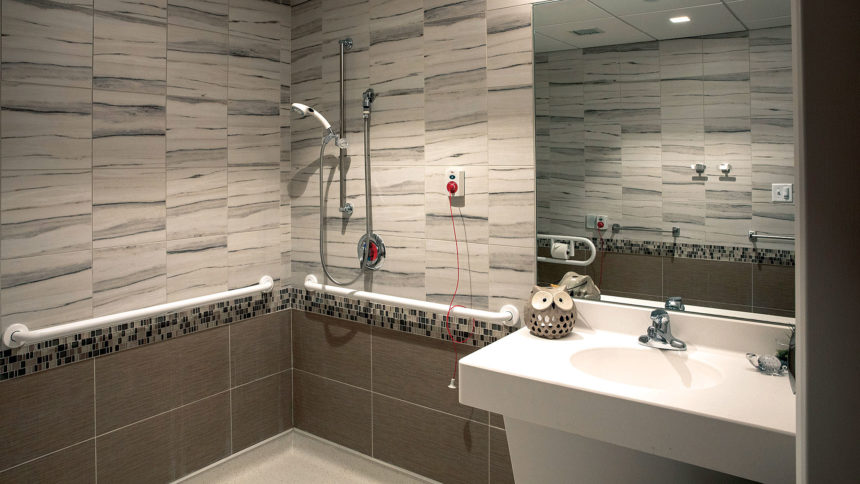Bathing practices in nursing homes continue to innovate and improve. Like any process, there’s always room to do better. With bathing, it’s a constant juggling act of balancing infection control concerns and safety and privacy issues to raise up the overall experience. Our experts weigh in here with best practice advice.
1. Staying ahead of infection control issues is the highest priority.
Leading the list is the need to clean and disinfect tubs between each bath, says Kari Harbaugh, senior product consultant, Direct Supply.
“Overall resident satisfaction with bathing will correspond with improved quality care and better clinical outcomes, which will help SNFs continue to attract referrals with positive star ratings and survey results, says Karen Lerner, RN, vice president of Drive Devilbiss Healthcare.
“Create and follow a procedure for cleaning the bathing area,” adds Zach Papenhausen, president and CEO of Apollo Corporation. “Often, the cleanest rooms we encounter have a defined process that is followed daily.”
This includes a cleaning process using a surfactant that removes the surface dirt, grime and loose particles, followed by a quaternary disinfectant.
Advances in “near UV” in the 180- to 400-nanometer wavelength could have a significant impact on future infection control, he adds.
“The overall bath area layout can go far in improving infection control practices,” says Patricia Mechan, director, clinical and consulting for Guldmann Inc. She also advised taking into consideration whether the space is adequate for allowing nurses and aides to execute tasks. Making the best use of the overall physical space is paramount, Mechan says
2. Create a more relaxing, luxurious bathing experience.
This helps put residents and staff at ease.
To many designers and consultants, “bathing equipment is a great opportunity for upgrading, improvement and differentiation,” Lerner observes.
“Enhancing comfort and relaxation are essential, and often, staying warm is a key part of that process,” Papenhausen adds.
Along those lines, a few things to keep in mind: Review steps in the process that may leave a resident feeling vulnerable or cold. Consider how to best control ambient room temperature by providing clothing/towels or body cover outside the bathing area, towel warmers and heat sources like ceiling lamps.
Consider whirlpools over air spas, says Harbaugh, adding that “soft lighting, warm colors, and soothing music can transform an otherwise cold, scary experience.”
And finally, consider an integrated overhead lift in any areas that include tubs or hydrotherapy features, Mechan says.
3. Ensure greater resident privacy and dignity.
Observe the “Golden Rule.” Ultimately, any meaningful effort to improve a resident’s bathing experience will make privacy and dignity paramount.
“If the person taking the bath feels uncomfortable or like a burden, what happens next doesn’t matter,” Papenhausen says. This includes private, individualized spaces, he added.
“When planning the layout for your bathing room, make sure there is a large enough space for changing safely,” Harbaugh adds.
To that, Mechan adds, “In new construction and in renovation opportunities, create en suite bathrooms to resident bedrooms, even if the en suite bathroom is shared between two adjacent resident bedrooms.”
“As an alternative to bathing residents like a car wash, facilities can provide equipment that evokes feelings of calm, soothing, relaxation and safety,” says Lerner.
4. Walk-in tubs are becoming more commonplace.
That’s because they offer a blend of comfort and safety. Experts agree that, although generally slow to catch on in nursing homes, walk-in tubs offer a host of benefits that go far in preserving dignity while allowing for a much stronger safety footprint.
“Walk-in tubs are becoming a standard option because folks who go to SNFs want to — and have a right to — feel safe and secure and have a sense of control over how they bathe,” says Lerner.
“Walk-in tubs with low thresholds reduce the risk of falls during entry and exit,” adds Papenhausen.
Moreover, tubs with low-entry, wide doors and secure locks allow residents to bathe independently or with minimal assistance, “preserving their dignity,” he says.
Mistakes to avoid
- Inadequate staff training. It leads to poor resident morale and sometimes serious injuries.
- Inadequate or sloppy infection control. That’s a perfect setup for illness and liability.
- Ignorance about transfers. Take extra steps to ensure proper use of lifts.
From the September 2024 Issue of McKnight's Long-Term Care News




